

Update: This article was last updated on 2nd January 2024 to reflect the accuracy and up-to-date information on the page.
Learning can be an incredibly enriching experience for children, but traditional education methods often lack the engagement and excitement necessary to capture their attention.
In a world where technology and entertainment are ever-present, it’s essential to provide innovative and fun learning opportunities for children to keep them engaged and motivated.
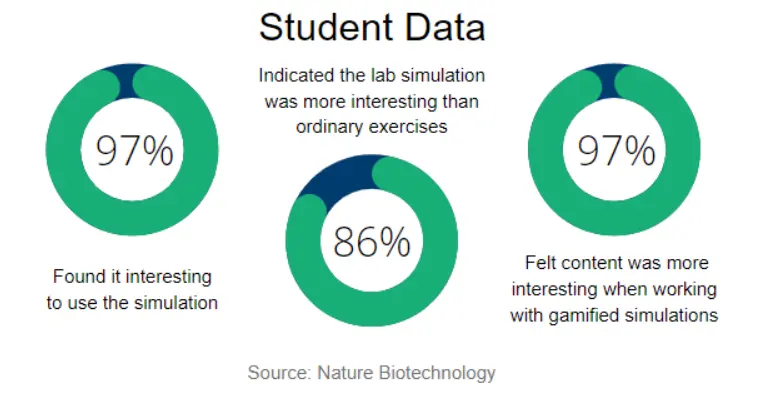
7 Innovative Ideas for Kids
| Sn.No | Invention Idea | Materials Needed | Procedure |
|---|---|---|---|
| 1 | Balloon Powered Car | - Big-sized balloon - Wooden skewers - Drinking straws - Stiff cardboard sheet - Nail and hammer - Bottle caps - Masking tape - Small rubber bands |
1. Cut cardboard into car shape. 2. Attach skewers for axles. 3. Insert straws as wheel axles. 4. Poke holes in bottle caps. 5. Attach wheels with skewers. 6. Secure the balloon to the straw. 7. Inflate balloon and release. |
| 2 | Stethoscope | - Two funnels - Cardboard tube/plastic tube - Balloon - Duct tape |
1. Insert funnels into tube. 2. Stretch balloon over one funnel. 3. Secure balloon with duct tape. 4. Decorate. 5. Use as a stethoscope. |
| 3 | Clear Bottle Ocean | - Clear water bottle - Water - Blue food coloring - Funnel - Baby/mineral oil - Glitter - Seashells - Beach sand - Plastic sea animals |
1. Remove labels from bottle. 2. Fill with water and add food coloring. 3. Fill with mineral oil. 4. Add sand, seashells, and plastic animals. 5. Close and shake. |
| 4 | Water-Glass Xylophone | - Six to eight identical glass bottles - Water - Food coloring - Plastic/metal spoons |
1. Fill bottles with water at different levels. 2. Add food coloring. 3. Tap bottles with spoons to create music. |
| 5 | Smartphone Projector | - Cardboard box - Clear tape - Hobby store magnifying glass or camera lens - Smartphone |
1. Cut out box lid. 2. Cut hole for lens. 3. Secure lens with tape. 4. Create base from cardboard lid. 5. Mount phone facing lens. 6. Project image on wall. |
| 6 | Egg Drop Container | - Plastic jar - Bubble wrap/cotton roll/styrofoam/soft foam - Cardboard box - Tape - Scissors - Rubber bands |
1. Securely pack egg inside plastic jar. 2. Create contraption using materials. 3. Use rubber bands as bungee cords. 4. Drop from balcony. |
| 7 | Castle Lantern | - Cardboard sheet - Scissors - Paper glue - LED Votive - Butter paper - Colors |
1. Draw and color castle on cardboard. 2. Cut out windows and doors. 3. Glue butter paper behind cutouts. 4. Fold into 3D model. 5. Place LED votive inside. |
Ways to make learning enjoyable
Today, thanks to advanced technology, we have a variety of tools available to make learning interesting, easier, and stress-free.
We have listed some of them below:
Moonpreneur
1. Virtual Reality Learning
Virtual reality (VR) is an immersive technology that can transport children to a new world of learning where children can explore historical events, experience scientific phenomena, and even engage in simulations of real-world scenarios.
One example is Google Expeditions, a free app that provides VR experiences for various subjects and even allows teachers to create their expeditions. By seeing, hearing, and interacting with the material, kids are more likely to retain what they’ve learned and stay engaged in their education. VR has numerous educational benefits in various fields.
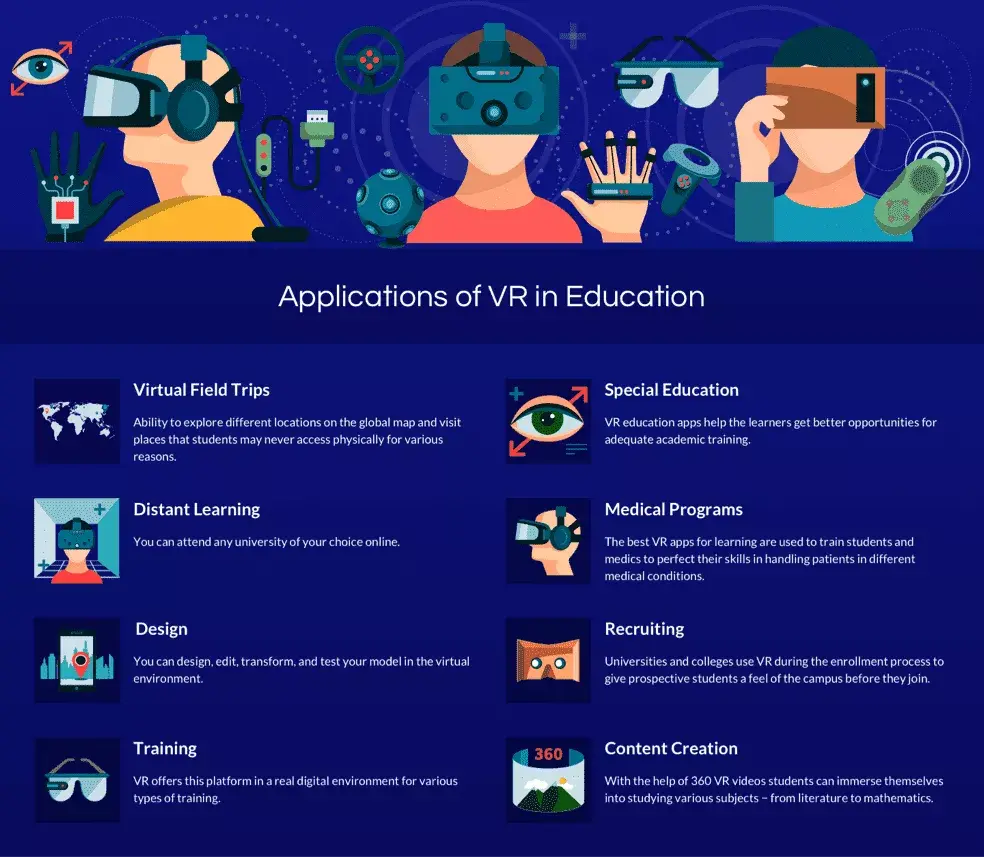
Source: Litslink
2. Gamification of Learning
Gamification is using game design elements in non-game contexts, such as education. Educators can create a more engaging and rewarding experience for children by incorporating game mechanics into learning.
According to a study, students who participated in gamified learning had higher average scores for points, badges, and logins and demonstrated greater accuracy than those who did not. Out of the numerous strategies for gamified learning, the following are the most effective.
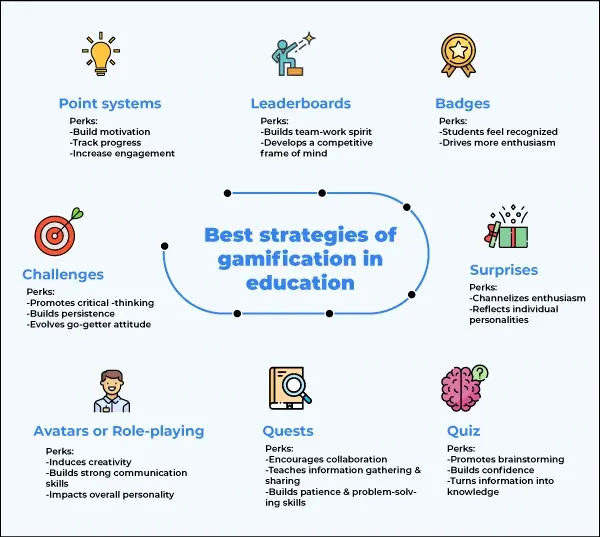
Source: Pickcel
Minecraft’s Education Edition is a great way to gamify learning. Students learn about history, science, and even coding while playing the game. It also creates a safe space for students to make mistakes and take risks without fear of failure. Thus, learning becomes more enjoyable when it’s turned into a game!
3. Project-Based Learning
Project-based learning is about learning by doing. It encourages children to learn through hands-on projects centered around real-world problems. It gives students the freedom to choose their own topics, take ownership of their learning, and develop critical thinking and problem-solving skills, as well as teamwork and collaboration skills.
Here are the top benefits of project-based learning and how it can transform the way students learn and grow:

Overall, it’s a powerful teaching tool that can help students develop a love for learning and a passion for discovery that will stay with them for life.
4. Collaborative Learning
Collaborative learning is an interactive approach to education that involves students working together in groups to achieve common goals. It encourages kids to share their knowledge and ideas and to learn from each other’s strengths and weaknesses.
Research shows that educational experiences that are active, social, contextual, engaging, and student-owned lead to deeper learning. Jigsaw Strategy is a great example of such education, where students work together in small groups to become experts on a particular topic and then teach their findings to the rest of the class. This way, they can build confidence and self-esteem as kids learn to support and encourage each other.
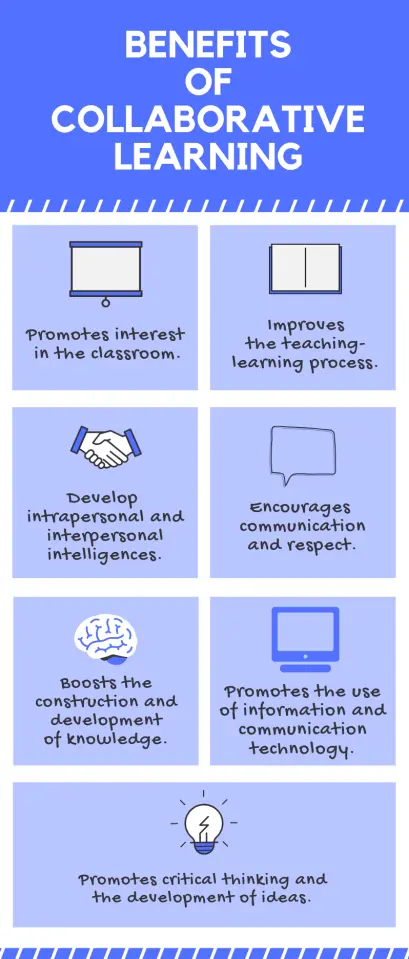
Source: learning bp
5. Experiential Learning
Experiential learning involves learning through experience and reflection. Children can explore, experiment and learn from their own experiences. It helps children to understand complex concepts and ideas by allowing them to see them in action. Children can develop a lifelong love of learning and a thirst for knowledge by actively participating in their learning.
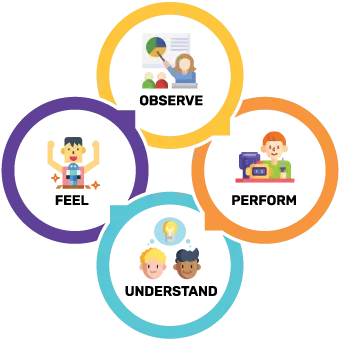
Service learning, student teaching, role-play simulations, cooperative education, and internships are examples of experiential education that offer more than just skill-building opportunities; they also provide a chance to embark on exciting adventures. Through these experiences, learners can immerse themselves in real-world scenarios and gain skills that cannot be obtained through classroom learning alone.
In conclusion, fun learning is the key to unlocking a child’s potential and inspiring them to become lifelong learners.
Children can unleash their imagination and creativity while building essential skills and knowledge. So why settle for dull lectures and boring textbooks when you can have an adventure-filled learning experience? Let’s break the mold and make learning fun for kids!
FAQ
Q 1: What fun things can my kids do at home to learn about science and technology?
A: Try making a volcano, building a simple robot, or doing cool science experiments with things you have in the kitchen.
Q 2: How can I help my child be more creative when they play?
A: Give them toys that don’t have strict rules, let them draw and make things, or pretend-play stories to spark their imagination.
Q 3: Are there easy ways to teach my child about computers and coding?
A: Check out games like Scratch or websites like Code.org; they make learning to code fun and are perfect for different ages.
Q 4: What can I do to teach my child to care about the environment?
A: Try fun projects like making art from recycled stuff, planting a small garden, or going on nature walks to learn about taking care of our planet.
Q 5: How can I use technology to help my child learn without too much screen time?
A: Use apps and websites that make learning fun, but mix it up with activities like drawing, reading, or playing outside to keep things balanced.
Moonpreneur understands the needs and demands this rapidly changing technological world is bringing with it for our kids. Thus we are on a mission to educate and ignite the flames of entrepreneurship through our holistically created online STEM programs, which will help kids master the futuristic sciences such as Robotics, Game Development, App Development, Advanced Math, and much more!!
Register for a free 60-minute Robotics Workshop today!













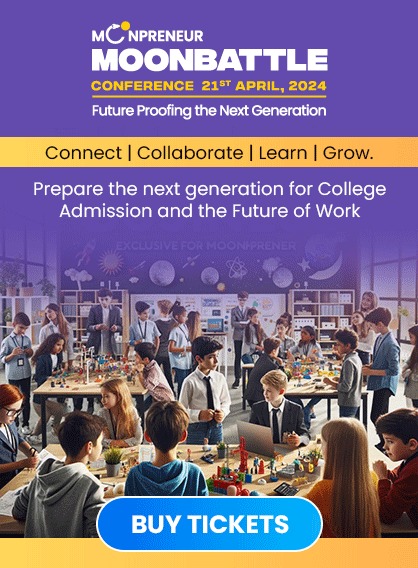




Does incorporating play and creativity into learning can benefit a child’s overall development?
Incorporating play and creativity into learning fosters a love for exploration and discovery. It enhances problem-solving skills, boosts imagination, and promotes social interaction. This holistic approach cultivates confidence and a lifelong passion for learning.
Suggest some additional creative approaches to make learning more engaging and enjoyable for kids?
Utilize educational games, interactive simulations, and hands-on experiments. Encourage open-ended projects, incorporate multimedia resources, and connect lessons to real-world applications. Foster curiosity and allow for student-led exploration to spark a love for learning.